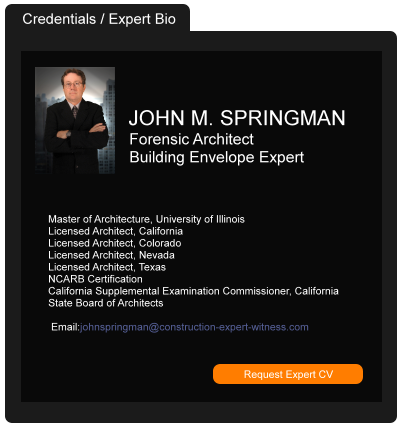Home-Rentals Wall Street Made Say Grow or Go: Real Estate
July 23, 2014 —
Heather Perlberg and John Gittelsohn – BloombergAlexander Philips joined the rush to buy foreclosed U.S. homes four years ago, spending $40 million on houses in California and Nevada to operate as rentals. Now his firm, Twinrock Partners LLC, is getting ready to sell.
“We didn’t want to be the last one standing when the music stopped,” Philips, 38, said in a telephone interview. “We view this as a trade, not as a business.”
The U.S. home-rental industry, transformed over the past two years by Wall Street-backed companies that were built on the rubble of the housing crash, is poised to be reshaped again as landlords like Philips get out. Corporate owners with limited capital or deadlines to repay investors are now selling houses in bulk, or one by one, after a 26 percent surge in prices from a March 2012 low. For bigger firms, swallowing smaller competitors is among the best opportunities for growth as they shift their focus to managing scattered properties.
Ms. Perlberg may be contacted at hperlberg@bloomberg.net; Mr. Gittelsohn may be contacted at johngitt@bloomberg.net
Read the court decisionRead the full story...Reprinted courtesy of
Heather Perlberg and John Gittelsohn, Bloomberg
Timely Written Notice to Insurer and Cooperating with Insurer
June 21, 2017 —
David Adelstein - Florida Construction Legal UpdatesI harp on notifying a liability insurer in writing once a claim is asserted against you. As soon as possible. I harp on this because as an insured you want to remove any doubt or argument that the insurer was prejudiced due to a lack of timely notice.
In a recent opinion, Zurich American Insurance Co. v. European Tile and Floors, Inc., 2017 WL 2427172 (M.D.Fla. 2017), the insurer moved for summary judgment in a coverage action arguing that its insured failed to provide it timely written notice. Specifically, the insurer argued that the insured violated the clause in the liability policy that states:
2. Duties in the Event of Occurrence, Offense, Claim or Suit
b. If a claim is made or “suit” is brought against any insured, you must:
- Immediately record the specifics of the claim or “suit” and the date received; and
- Notify us as soon as practicable.
You must see to it that we receive written notice of the claim or “suit” as soon as practicable.
c. You and any other insured must:
- Immediately send us copies of any demands, notices, summonses or legal papers received in connection with the claim or “suit”;
- Authorize us to obtain records and other information;
- Cooperate with us in the investigation, settlement or defense of the claim or “suit”; and
- Assist us, upon our request, in the enforcement of any right against any person or organization which may be liable to the insured because of injury or damage to which this insurance may also apply.
Read the court decisionRead the full story...Reprinted courtesy of
David Adelstein, Florida Construction Legal UpdatesMr. Adelstein may be contacted at
Dadelstein@gmail.com
Construction Defects Checklist
July 18, 2018 —
Bremer Whyte Brown & O’MearaConstruction defects have existed since humans first began building structures, and will continue to be an occurrence into the future. For builder developers, contractors, and subcontractors, the specter of construction defects is a constant worry. Construction defect litigation is commonplace and can occur years after the construction project has been completed. This opens up an ongoing channel of risk and liability for construction contractors and project managers that are at risk of litigation far after they have completed a project. In this article, we’ll provide a helpful construction defects checklist that outlines the key avenues of risk and areas where construction defects litigation is most often focused. This checklist can help project managers, contractors, and subcontractors anticipate areas of their projects that may need extra attention or focus in order to ensure that they adhere to relevant local and state construction ordinances.
Gaining a greater understanding of what construction defects are can provide insight into how construction litigation can prove beneficial for structure owners or contractors who received substandard work. Many clients may not understand that they have an avenue to seek redress in cases where faulty workmanship may have resulted in economic damages or safety concerns in their home, building, or another construction project. Understanding the scope of what a construction defect is, and the areas that are most commonly litigated is helpful to understand when construction defect litigation is a viable option to pursue redress.
Read the court decisionRead the full story...Reprinted courtesy of
Bremer Whyte Brown & O’Meara
Las Vegas Student Housing Developer Will Name Replacement Contractor
February 15, 2018 —
John Guzzon – ENRMore than four months after construction abruptly stopped on a $76-million student housing project for the University of Nevada at Las Vegas, the developer is seeking a new contractor.
Read the court decisionRead the full story...Reprinted courtesy of
John Guzzon, Engineering News- RecordMr. Guzzon may be contacted at
ENRSouthWestEditor@enr.com
Building the Secondary Market for Reclaimed Building Materials
August 30, 2021 —
Christopher G. Hill - Construction Law MusingsFor this week’s guest post Friday, Musings welcomes Mark Rabkin of Deconstruction Management, Inc., the first, dedicated, for-profit deconstruction management firm in the country. Based in Northeast Ohio, it through all stages of building removal from property acquisition to deconstruction to recycling and architectural salvage.
With 10 years of professional experience as an independent risk advisor focusing on sustainable real estate and development, Mark counsels his clients on effective strategies to reduce hazards and mitigate losses. Mark oversees the marketing and administrative functions of Deconstruction Management, Inc. and is responsible for managing the architectural salvage and the upcycled material reuse and resale side of the business.
Mark is a leader in the advocacy of sustainable building strategies both locally and nationally. Mark serves as the volunteer Director of Advocacy for the Northeast Ohio Chapter of the United States Green Building Council. He is also an active contributor on many of the chapter’s strategic implementation teams. Mark is a member of Entrepreneurs for Sustainability, the Council of Smaller Enterprises’ Sustainability Task Force and is an active participant in the Sustainable Cleveland 2019 Initiative.
Read the court decisionRead the full story...Reprinted courtesy of
The Law Office of Christopher G. HillMr. Hill may be contacted at
chrisghill@constructionlawva.com
The Housing Market Is Softening, But Home Depot and Lowe's Are Crushing It
February 26, 2015 —
Patrick Clark – BloombergTwo monthly reports that track the strength of the U.S. housing market offered dour assessments this week. And yet the companies that sell homeowners appliances, building materials, and power tools are thriving.
Home Depot reported strong sales growth yesterday, and Lowe’s did the same today. That follows news that existing home sales dropped 4.9 percent in January, according to the National Association of Realtors, and results from the S&P Case/Shiller index that showed the growth of home prices is slowing in major U.S. cities.
Read the court decisionRead the full story...Reprinted courtesy of
Patrick Clark, BloombergMr. Clark may be contacted at
jclark185@bloomberg.net
Right to Repair Reform: Revisions and Proposals to State’s “Right to Repair Statutes”
April 01, 2015 —
Richard H. Glucksman, Jon A. Turigliatto, and David A. Napper – Chapman Glucksman Dean Roeb & Barger BulletinVirtually all of the states in the country have "Right to Repair" statutes. We follow the various states legislatures to determine what trends or developments are occurring. For years, Chapman, Glucksman, Dean, Roeb, and Barger has prepared a compendium that provides the salient points of these Right to Repair statutes. In this extended BULLETIN we provide a discussion of important and very recent developments that are occurring in
Nevada,
Arizona,
Florida, and
Colorado.
In Nevada, Governor Brian Sandoval very recently signed The Homeowner Protections Act of 2015, representing a massive transformation to Nevada's Right to Repair Act in the builder's favor, including but not limited to removal of the attorney fees provision as part of claimant's damages.
In Arizona, Governor Doug Ducey signed House Bill 2578 in March 2015, amending Arizona Revised Statutes § 12-1361 et. Seq. by eliminating a homeowner’s statutory opportunity to recover attorney and expert fees and providing a builder the right to repair the alleged defects.
In Florida, Bill 87 proposes to shorten the statute of limitations, requires more detail in the Homeowner's notice of defects, and allows a builder to use a prior settlement in lieu of repair as an affirmative defense against subsequent claims.
In Colorado, lawmakers are proposing to place additional conditions in front of an HOA board before filing suit and require alternative dispute resolution for HOA Condominium Defect Claims even if the requirement no longer exists at the time the claim is brought.
NEVADA: GOVERNOR SIGNIFICANTLY MODIFIES NEVADA'S RIGHT TO REPAIR ACT WITH THE SIGNING OF ASSEMBLY BILL 125
Nevada's Right to Repair Act has been extensively modified by the signing of Assembly Bill 125 also known as the Homeowner Protections Act of 2015. The Act considerably revises Chapter 40 of the Nevada Revised Statute ("NRS") governing construction defect actions. According to Governor Brian Sandoval, the signing of the first major bill of the legislative session in Nevada "discourages frivolous litigation and strengthens Nevada's rebounding housing market."1 Among other provisions, the Homeowner's Protection Act removes a claimant's ability to recover reasonable attorney fees as part of the claimant's damages, shortens the statutes of repose, defines the duty to defend, and prohibits a claimant from filing a notice of construction defects unless the claimant has submitted a claim under the homeowner's warranty and the insurer has denied the claim. Only claims that have been denied under the homeowner's warranty may be claimed.
Additionally, the term "construction defect" is now defined as a defect "(1) which presents an unreasonable risk of injury to a person or property; or (2) which is not completed in a good and workmanlike manner and proximately causes physical damage to the resident or appurtenance."
Critically, the Act now requires that the notice of construction defects (1) state in "specific detail" rather than reasonable detail, each defect, damage, and injury to each residence or appurtenance that is subject to the notice; (2) state the exact location of each defect, damage, and injury, rather than describe in reasonable detail the location of the defect; and (3) include a statement signed by the owner of the residence or appurtenance in the notice that the owner verifies that each defect, damage and injury exists in the residence or appurtenance.
Although not every revision is set forth above, the passing of The Homeowner's Protection Act appears to be a colossal victory for builders as the majority of the revisions to NRS Chapter 40 are favorable to the builder while additional or heightened requirements have been placed upon homeowners who wish to bring a claim. The following two Right to Repair updates concern proposed bills that also seek to radically change the pre-claim construction defect landscape.
ARIZONA: BUILDERS NOW HAVE THE RIGHT TO REPAIR INSTEAD OF AN OPPORTUNITY TO REPAIR WHILE HOMEOWNERS NO LONGER HAVE A STATUTORY RIGHT TO ATTORNEY FEES AND EXPERT FEES
In March 2015, Arizona Governor Doug Ducey signed into law House Bill 2578, revising key portions of the Right to Repair pursuant to the Purchaser Dwelling Act (Arizona Revised Statute ("A.R.S.") Section 12-1361 et. seq. Important categories of the Act affected by the new law include the builder's right to repair or replace, the process of repair or replacement, dwelling actions, and homeowners' association dwelling actions. Most notably, prior to filing a construction defect suit, or a "dwelling action" as defined in A.R.S. Section 12-1361 et. seq., a homeowner must provide written notice detailing the basis of a dwelling action and must allow the builder to repair or replace the alleged construction defects.
Another significant revision includes the elimination of the prevailing homeowner's statutory right to reasonable attorney fees, witness fees and taxable costs in a dwelling action. Bill 2578 also revised the definitions of "Construction Codes," "Construction Defect," "Construction Professional," and "Material Deficiency." Homeowner Associations now must disclose additional information regarding the claim to its members and must show compliance with procedures set forth in the community documents. Clearly, Arizona's legislature is seeking to reduce the amount of frivolous construction defects suits with the elimination of a prevailing homeowner's right to reasonable attorney fees and expert fees. Moreover, the Legislature now provides builders in Arizona with the right to make repairs to alleged construction defects if they so choose.
FLORIDA: FLORIDA GENERAL CONTRACTORS SEEK AGGRESSIVE AMENDMENT TO PRE-CLAIM CONSTRUCTION DEFECT PROCESS WITH BILL 87
Florida's Right to Repair Act, Chapter 558 of the Florida Statutes, may be extensively revised in the near future. With the help of the South Florida Chapter of the Associated General Contractors of America, House of Representatives Bill 87 will be presented as an amendment to the Pre-Claim Construction Defect requirements set forth in Chapter 558.
The proposed bill is aggressive and seeks to address issues in the current statute. These deficiencies have seemingly prevented construction defect claims from being resolved without the filing of a civil suit. Notably, the statute of limitations period for a property owner to file suit for construction defects would be shortened based upon the revision of the term "completion of a building or improvement" to include issuance of a temporary certificate of occupancy. Additionally, property owners would be subject to additional requirements for issuing a notice of claim, including specific identification of locations of each alleged construction defect as well as the specific provisions of the building code, project plans, project drawings, project specifications, or other documentation, information or authority that serve as the basis of the claim for each alleged construction defect.
Perhaps most importantly, the bill provides that if a construction defect is settled by repairs offered by the contractor during the Chapter 558 claims process but the repairs fail to fully correct the defects and the owner or association then files suit because the issue was not resolved, the defendant may claim that the issue was previously resolved and the plaintiff owner may face sanctions. Even if the bill as proposed does not pass in its current form, on the heels of Nevada's Right to Repair Act overhaul, it may serve to encourage other states, including California, to take another look at their Right to Repair Act procedures.
COLORADO: UPDATE FROM CGDRB SEPTEMBER 2014 BULLETIN: COLORADO PROPOSED LEGISLATION RE: HOA CONDOMINIUM DEFECT CLAIMS
In September 2014, we provided an important discussion of potential significant tort reform legislation presented in Colorado regarding construction claims by homeowner associations for condominiums. This Bulletin serves as an update to that discussion as intense debate over legislative reform to provide condominium builders in Colorado more legal protections has heated up again.
On October 13, 2014, the city of Lakewood became the first Colorado municipality to pass a “right to repair” measure with respect to common interest communities. The Lakewood measure gives builders a right to repair construction defects before homeowner associations take legal action and requires a homeowner majority approval before legal action is taken.
On February 10, 2015, two bipartisan Senators introduced Senate Bill 177, a bill proposing changes to the prerequisites for a homeowner association to file a construction defect action under the Colorado Common Interest Ownership Act. SB 177, if passed in its current form, would require:
- That when the governing documents of a common interest community require mediation or arbitration of a construction defect claim and the requirement is later amended or removed, mediation or arbitration is still required for a construction defect claim;
- That the mediation or arbitration take place in the judicial district in which the common interest community is located;
- That the arbitrator (1) be a neutral third party; (2) make certain disclosures before being selected; and (3) be selected as specified in the community's governing documents or, if not specified, in accordance with the Uniform Arbitration Act;
- That before a construction defect claim is filed on behalf of the homeowner association: (1) the parties must submit the matter to mediation; and (2) the board must give advance notice to all unit owners, together with a disclosure of the projected costs, duration, and financial impact of the construction defect claim, and must obtain the written consent of a majority of the unit owners.
- That the disclosures required prior to the purchase and sale of property in a common interest community a notice that the community's governing documents may require binding arbitration of certain disputes.
As explained in our previous Bulletin, currently, in Colorado, homeowner association boards are only required to obtain two condominium owners’ consent to file a construction defect suit. Similar to SB 220, which proposed a number of the same requirements, SB 177 would likely have the potential effect of reducing the number of lawsuits filed against builders and decrease the treat of frivolous claims; and allow the parties an opportunity to resolve their issues short of litigation.
On March 18, 2015, the Colorado Senate Committee on Business, Labor, and Technology voted 6-2 to forward SB-177 to the full Senate with four minor amendments. The amendments provide:
- The homeowner association’s attorney can prepare the disclosures that must be presented to unit owners prior to filing a construction defect claim;
- Voting may be done by proxy;
- The parties must agree on an arbitrator. If they cannot agree, they may petition the court to appoint one. Preference will be given to the arbitrator designated in the community’s governing documents; and
- A different list of disclosure topics is required.
Also introduced this year is SB 091, a bill to shorten the Colorado’s construction defect statute of repose to a homeowner from bringing an action after three years. On March 16, 2015, the Colorado Senate Committee on State, Veterans & Military Affairs voted to pass SB 091 to the full Senate with two substantive amendments. The first amendment excludes any multifamily developments from being effected by the shortened statute of repose. The second amendment proposes the statute of repose only be shortened to five years, plus an additional year if the defect manifests in year five. Currently, in Colorado, if a homeowner does not discover a construction defect within six years of a house’s completion, the homeowner may forfeit all legal rights to seek repair. Again, SB 091 would protect builders from frivolous or untimely claims by homeowners.
We will continue to monitor development of these bills and others that may be proposed in the future. If we can provide any further information concerning these developments or you are interested in receiving our compendium of the various right repair statutes please let us know.
1 As reported by KTVN-TV in Reno, Nevada: http://www.ktvn.com/story/28163519/senate-passes-constructiondefect-bill-sends-to-governor-sandoval.
Reprinted courtesy of Chapman Glucksman Dean Roeb & Barger attorneys
Richard H. Glucksman,
Jon A. Turigliatto and
David A. Napper
Mr. Glucksman may be contacted at rglucksman@cgdrblaw.com
Mr. Turigliatto may be contacted at jturigliatto@cgdrblaw.com
Mr. Napper may be contacted at dnapper@cgdrblaw.com
Read the court decisionRead the full story...Reprinted courtesy of
Illinois Appellate Court Affirms Duty to Defend Construction Defect Case
August 04, 2015 —
Tred R. Eyerly – Insurance Law HawaiiThe Illinois Appellate Court affirmed the trial court's ruling that the insurer had a duty to defend a construction defect case. West Bend Mut. Ins. Co. v. Pulte Home Corp., 2015 Ill App. Unpub. LEXIS 1039 (Ill. Ct. App. May 15, 2015).
Pulte Home Corporation was a developer who developed and constructed a residential condominium development known as The Reserve of Elgin (The Reserve). G.H. Siding was subcontracted by Pulte to work on the development, including the installation of exterior siding.
The Reserve Homeowners Association (HOA) filed suit against Pulte and James Hardie Building Products Inc., the company that manufactured the exterior siding. The complaint alleged that Pulte developed, designed, constructed and sold the units and common areas. Pulte installed siding manufactured by Hardie on the exterior of the units. The siding was allegedly defective. The HOA alleged breach of implied warranty of habitability and breach of contract by Pulte. Hardie was sued for breach of express warranty and breach of implied warrant of habitability.
Read the court decisionRead the full story...Reprinted courtesy of
Tred R. Eyerly, Insurance Law HawaiiMr. Eyerly may be contacted at
te@hawaiilawyer.com


































































